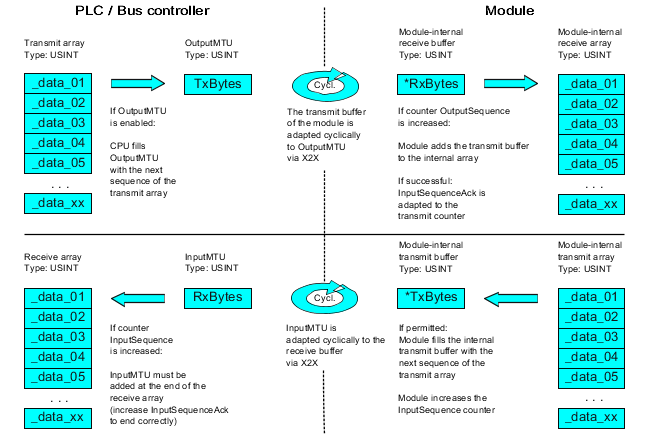X20CM4800X - Data sheet V1.04
Before Flatstream can be used, the respective communication direction must be synchronized, i.e. both communication partners cyclically query the sequence counter on the opposite station. This checks to see if there is new data that should be accepted.
If a communication partner wants to transmit a message to its opposite station, it should first create a transmit array that corresponds to Flatstream conventions. This allows the Flatstream data to be organized very efficiently without having to block other important resources.
Fig.: Flatstream communication
The first thing that happens is that the message is broken into valid segments of up to 63 bytes, and the corresponding control bytes are created. The data is formed into a data stream made up of one control bytes per associated segment. This data stream can be written to the transmit array. The maximum size of each array element matches that of the enabled MTU so that one element corresponds to one sequence.
If the array has been completely created, the transmitter checks whether the MTU is permitted to be refilled. It then copies the first element of the array or the first sequence to the Tx byte registers. The MTU is transported to the receiver station via X2X Link and stored in the corresponding Rx byte registers. To signal that the data should be accepted by the receiver, the transmitter increases its SequenceCounter.
If the communication direction is synchronized, the opposite station detects the incremented SequenceCounter. The current sequence is appended to the receive array and acknowledged by SequenceAck. This acknowledgment signals to the transmitter that the MTU can now be refilled.
If the transfer is successful, the data in the receive array will correspond 100% to the data in the transmit array. During the transfer, the receiving station must detect and evaluate the incoming control bytes. A separate receive array should be created for each message. This allows the receiver to immediately begin further processing of messages once they have been completely transferred.
